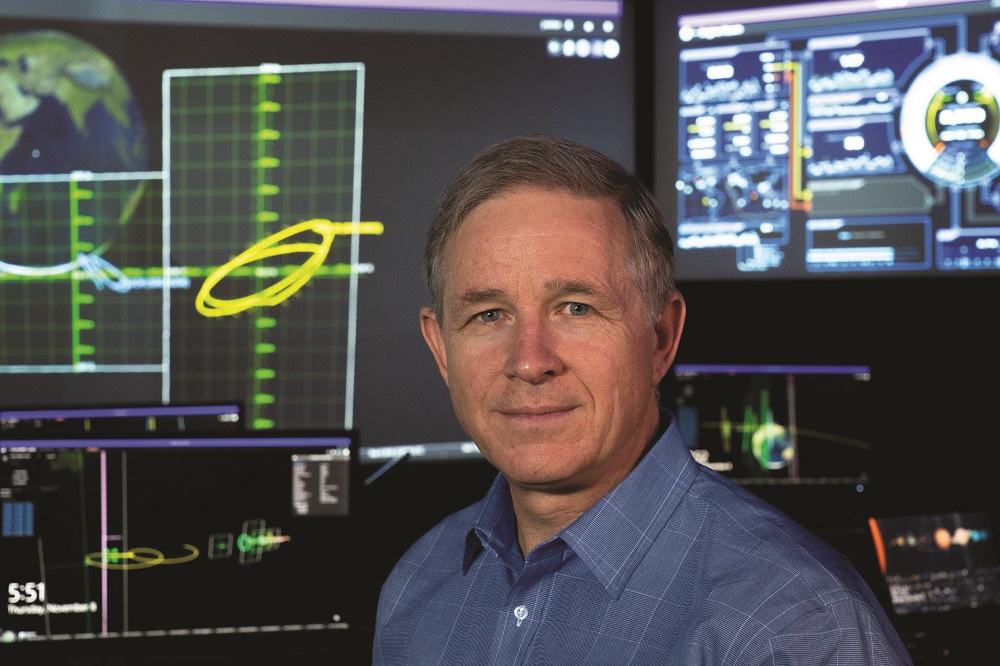For three decades, Paul Graziani never seriously considered selling Analytical Graphics Inc., the Exton, Pennsylvania-based company he co-founded and has led since 1989.
“We felt like we got a pretty good gig on our own here,” Graziani said in an interview.
In the last 18 months, though, Graziani and his executive team began considering strategies to expand their customer base.
Although company revenues were continuing to grow at a healthy pace, “we were serving too small a fraction of our marketplace,” Graziani said. “We really wanted to serve more.”
To reach new customers, AGI began working with Ansys, a much larger company based in Pittsburgh that specializes in engineering-simulation software. It was a great partnership, Graziani said, because while both AGI and Ansys offer digital engineering products, their software fills different niches.

AGI focuses on the operation of systems, like satellites and aircraft, as well as systems of systems, like satellite constellations with their associated ground networks. Ansys, meanwhile, offers simulation software to help engineers evaluate the impact of design elements such as the efficiency of antennas, varying temperatures on computer chips and circuit boards, or the aerodynamics of components.
“The Ansys world goes from the chip to the component, subsystem and system,” Graziani said. “AGI starts right where they end at the system level and goes up to the system-of-systems level. The magic happens when design trades can be evaluated for the entire stack, from the chip to the system of systems.”
Then, an engineer can evaluate the impact of design trade-offs on overall mission effectiveness, Graziani said.
AGI announced plans to become a wholly owned subsidiary of Ansys in late October in a deal expected to close by the end of the year. In preparation, AGI is spinning off its Commercial Space Operations Center subsidiary as an independent company: Comspoc Corp.
DATA FUSION
Since it was established in 2014, Comspoc has developed products and services for satellite operators. In addition, Comspoc works round-the-clock to track objects in orbit and analyze data to provide government and commercial satellite operators with space domain and safety of flight information.
“We ingest data from telescopes, radars, radiofrequency antennas and ground stations, and fuse that together across all the orbital regimes: Earth orbit, cislunar and interplanetary,” Graziani said.
Travis Langster, Comspoc Corp. vice president and general manager, added, “It doesn’t matter whether the data comes from government, commercial or international entities.”
In addition, AGI and Thoth Technology of Canada have operated a commercial radar system since 2018 to track objects in geostationary orbit and beyond.
The sale of AGI will not affect Comspoc operations. In fact, very little will change for AGI employees other than Graziani, who will have a boss for the first time in nearly 32 years.
“The whole company will continue intact and I’ll remain CEO,” Graziani said. “As a wholly owned subsidiary, we will largely operate on our own.”
AGI’s Center for Space Standards and Innovation (CSSI) will remain part of Comspoc Corp. CSSI employs experts to develop advanced orbital mechanics techniques and space algorithms, create space operations and flight safety standards, and advance space debris mitigation efforts.
Comspoc also will continue to run the Space Data Center, which provides conjunction assessments and warnings to the Space Data Association, a group of commercial and government satellite operators who share operational data through a machine-to-machine interface. Comspoc compares information provided by satellite operators with the public space catalog to warn members of impending conjunctions and help them select suitable collision-avoidance maneuvers.
MOORE’S LAW
When AGI was founded in 1989 by Graziani and two colleagues from GE Aerospace, its most recognizable product was the Satellite Tool Kit, a software package with applications far more varied than its name suggested. Engineers and scientists performed complex analyses of missiles, aircraft and ground vehicles with the Satellite Tool Kit, later renamed the Systems Tool Kit.
Aerospace engineers initially relied on the Satellite Tool Kit to analyze orbits and determine, for example, when a satellite could see a ground station or obtain imagery of a particular site. Over the years, AGI added software modules to allow engineers to calculate the performance of communications networks, develop interplanetary missions and assess collision-avoidance maneuvers.
Throughout the company’s history, AGI executives led by Graziani have championed commercial space situational awareness, or SSA.
“We strongly believe that you cannot beat commercial for delivering more mission capability at a tiny fraction of the cost, delivered much sooner and with virtually zero risk because you get to try before you buy,” Graziani said. “But we are fighting the status quo: the system that starts with how the money is allocated in Congress and goes all the way through the acquisition organizations.”
Many individuals in the U.S. Air Force and U.S. Space Force recognize the value of commercial SSA, but “are stuck in a system that just can’t do commercial very well at all,” Graziani said.
As a result, the U.S. military spends vastly more money developing rather than buying SSA hardware and software.
“Our view is that it doesn’t make sense to try to develop these systems in today’s age, when Moore’s Law is halving the value of something every 18 months,” Graziani said. “Their development cycles are no less than six years. They lock in something when they start development and miss four cycles of Moore’s Law.”
This article originally appeared in the Nov. 16, 2020 issue of SpaceNews magazine.
